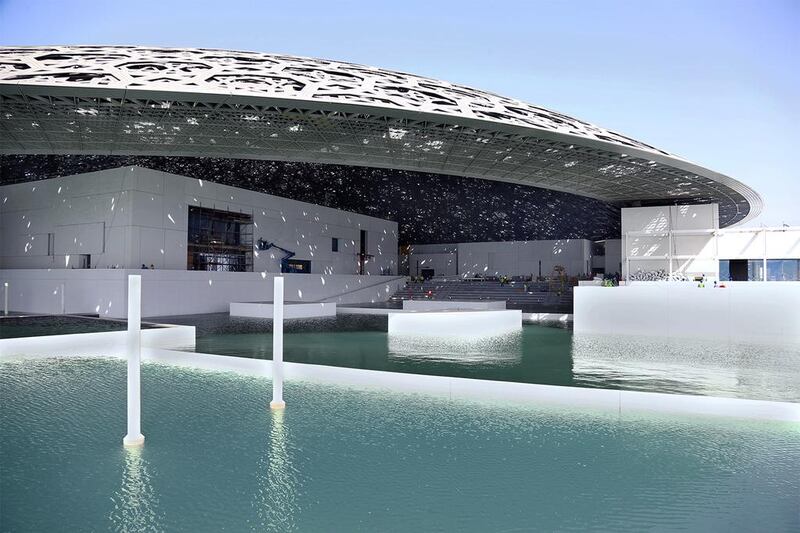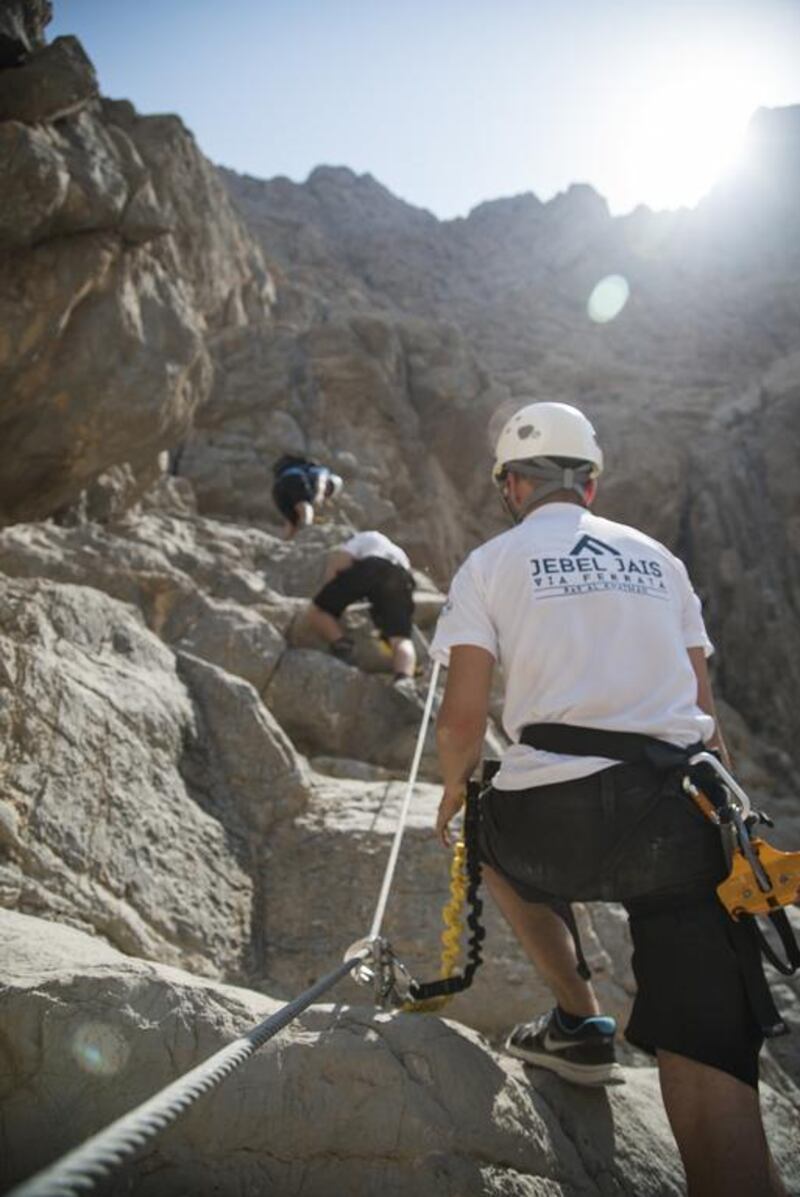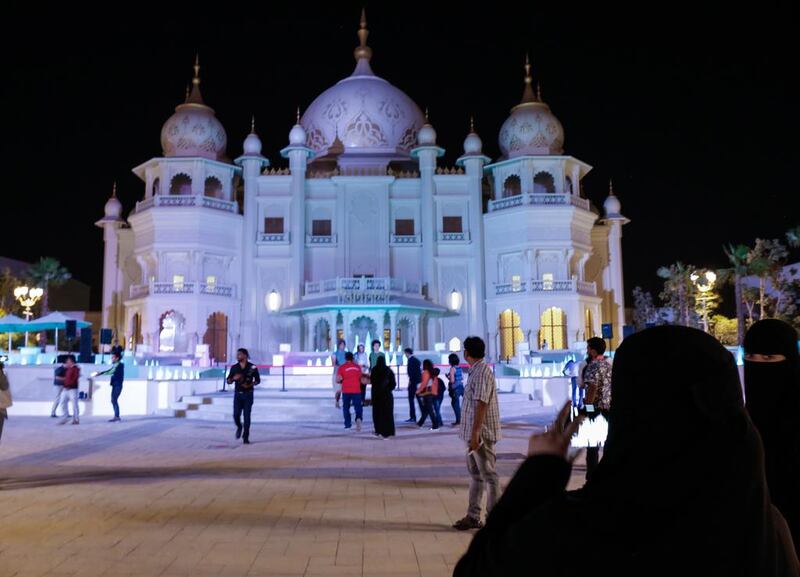LONDON // A stroll around the UAE section at the recent World Travel Market (WTM) in London confirms the country's tourism industry is in rude health.
Every booth, table and VIP area of each opulent stand was occupied, with Emirati representatives in deep discussions with tourism professionals from all over the world.
The UAE has the largest market for inbound tourism in the Middle East, with visitor numbers rising from an estimated 17.6 million this year to 21.8 million in 2020, says Business Monitor International.
While Dubai and, more recently Abu Dhabi, have both become firmly placed on the international tourism map, the country’s smaller emirates are also pushing to attract more overseas visitors, as evidenced by their presence at the WTM.
Sharjah, for instance, has been actively promoting to key markets including China, India and Russia and Kazakhstan, launching a family-friendly campaign called “Sharjah My Family Destination” as well as hosting the Formula 1 Powerboat Racing World Championship and Aquabike World Championship in December.
“Sharjah is well on its way to achieve its goal of attracting 10 million visitors by 2021,” Khalid Jasim Al Midfa, the chairman of the Sharjah Commerce and Tourism Development Authority (SCTDA), tells The National.
Another success story is Ras Al Khaimah, which is on course to achieve its aim of attracting one million visitors by the end of 2017, according to the Ras Al Khaimah Tourism Development Authority. The Emirate has already seen an increase of 45 per cent of visitors from Europe this year alone, mostly from Germany and the UK. The longer term goal is to attract three million visitors by 2025, the authority says.
Rather than competing with tourism magnets Dubai and Abu Dhabi, the emirate has its own unique selling points: “To be associated with such successful tourism in Dubai and Abu Dhabi can only be a good thing. Like the rest of the region, we look up to these emirates like you admire a successful older brother,” says Haitham Mattar, the chief executive of the Ras Al Khaimah Tourism Development Authority.
“However, Ras Al Khaimah prides itself on having its own brand and unique image, which has contributed to our emirate becoming of the most rapidly developing tourism sectors in the UAE,” he tells The National.
“Tourists are attracted to our emirate’s gorgeous natural vistas, from 64 kilometres of breathtaking beaches to Jebel Jais, the highest mountain in the UAE.
“Tourists also come to discover our 7,000 year-old culture and history. Ras Al Khaimah boasts historic fortifications, castles and towers that have proven to be hugely popular with our visitors,” Mr Mattar adds.
This year’s tourism-focused launches in RAK include a new zipline, a luxury mountain camp and a via ferrata climbing route on Jebel Jais. A via ferrata, “iron path” in English, is quite literally a route with fixed “protection” that aids travellers in moving safely through the mountains.
The emirate will also promote its memorable mountain driving routes, including 39km of road that snakes through the rugged Al Hajar Mountains. RAK’s Al Marjan Island, a 4.5km-long man-made archipelago, is set to boast 20 hotels by 2025, as well as a new convention and exhibition centre for 1,000 people.
Of course, given its sky-high profile, Dubai is still pulling in the crowds, especially from the UK. Since taking a holiday in the emirate last year with his wife and two-year-old son, the London-based writer Rob Waugh has been recommending the UAE to his friends.
“I’d been to Dubai on business, but had never stopped to visit,” Mr Waugh tells The National while visiting the WTM this month.
“It’s very child-friendly, with lots of activities like water parks, which are easy to get to.
“The people are also very helpful to families, and much more friendly to children than in the UK,” he says.
“I came away more positive about the UAE than I had expected, and I would love to go back.”
Investment over the past three decades in the UAE has created a wide variety of world-class attractions that have boosted tourist numbers. This year alone the country has added Motiongate Dubai, Bollywood Parks Dubai and Legoland Dubai to its offering, as well as created opportunity for cruise tourism growth with the new Abu Dhabi Cruise Terminal and the development of Sir Bani Yas Island as a second cruise stop.
Next year sees the opening of the spectacular Louvre Abu Dhabi, and the much-anticipated Dubai Madame Tussauds, and by 2018 there are plans for two new mega malls in Abu Dhabi . Major new attractions on Yas Island include CLYMB, which will feature the world’s widest flight chamber to recreate the experience of skydiving, and the world’s tallest indoor climbing wall. In addition, Warner Bros World Abu Dhabi is expected to boost Yas Island’s visitor numbers from 25 million in 2015 to 30 million in 2018.
Further down the line is Expo 2020 Dubai, which promises to be a tourism flagship of historical significance.
“The growing number of theme parks and world-class attractions popping up all over the UAE is cementing the destination’s new-found status as an international ‘theme park hub’,” John Farrelly, the country director of sales & marketing for the UAE at Marriott Hotels International, tells The National.
“Increasing awareness [of these] new attractions should create additional visibility for Dubai and increase demand for UAE among tourists worldwide as a destination in itself.”
The huge investment in theme parks and tourism infrastructure has created a buoyant market for the hotel industry and lots of potential for growth.
Marriott says its presence in the UAE is set to grow from the 43 properties and 14,615 rooms it has now, to 82 properties with more than 23,000 rooms by 2022. Next year it will add two new hotels, Ritz-Carlton Ras Al Khaimah, Al Hamra Beach and The Ritz-Carlton Ras Al Khaimah, Al Wadi Desert, to the three it already has in the country.
Meanwhile, the InterContinental Hotel Group (IHG) has 19 properties in the UAE and says it plans to grow room numbers by 40 per cent over the next five years. IHG is focusing on midscale brands in the UAE – which represent just 4 per cent of the hotel market in the Middle East according to the hotel data specialist STR – as well as growing its luxury brands.
Local hotel groups are also expanding in the area. Rotana Hotels & Resorts, for example, has plans to open 100 hotels by 2020, launching 16 new properties by the end of 2017.
In addition, UAE tourist boards are using targeted campaigns to appeal to key markets and create new ones.
Dubai, which recently celebrated the opening of its 100,000th hotel room, has plans to invest in more budget accommodation and intends to position itself as a world leader in sustainable tourism.
Abu Dhabi, on the other hand, aims to demonstrate that it has more than world-class theme parks to offer. Its new promotional videos are filmed in 40 different locations including city landmarks, deserts and historic sites, designed to show that it can meet the diverse needs of travellers from its top 10 inbound markets, says Saif Saeed Ghobash, the director general, of the TCA Abu Dhabi. The target markets are: the UAE; India; UK; China; Philippines; Saudi Arabia; Egypt; the United States; Germany; and Jordan.
Back at the World Travel Market show, a straw poll suggests that the UAE’s success story will be self-perpetuating.
Cathlyn Hughes, a teacher from Chester in the north-west of England, picked Dubai as a holiday destination based on friends’ recommendations and recently enjoyed a six-day stay at the Sofitel Palm.
“It was just glorious: peaceful, great service, great accommodation and the most fabulous beach,” Ms Hughes tells The National.
“All the people we met, both inside and outside the hotel, were incredibly friendly and helpful. We expected it to be amazing but the whole experience exceeded our expectations.”
business@thenational.ae
Follow The National's Business section on Twitter








